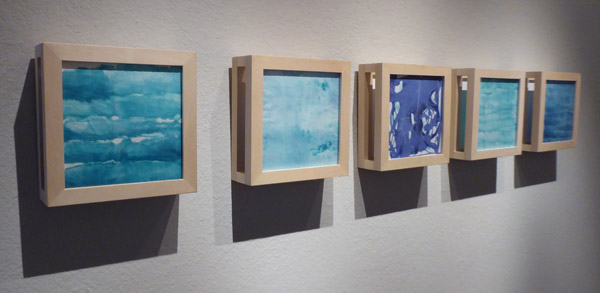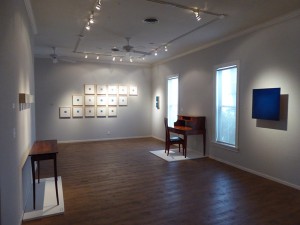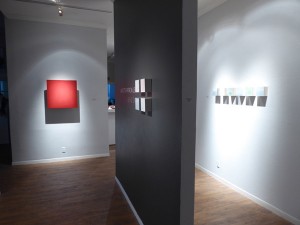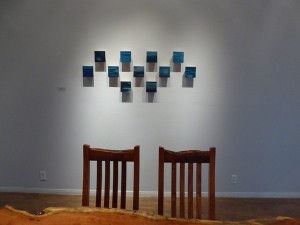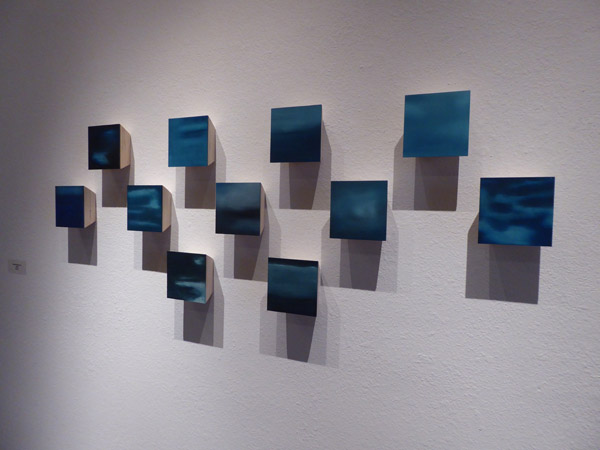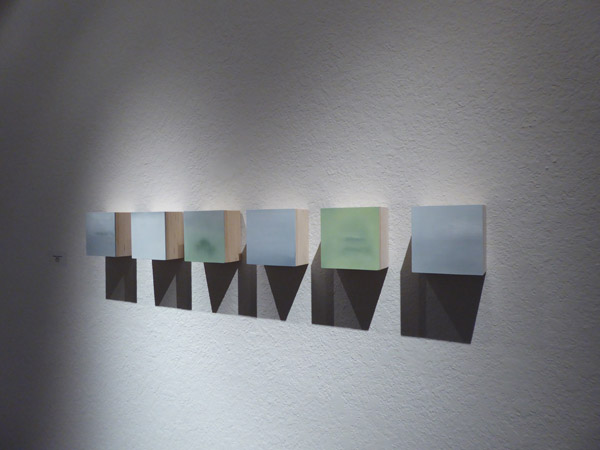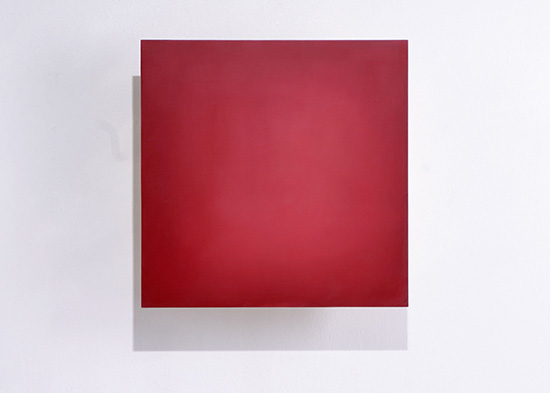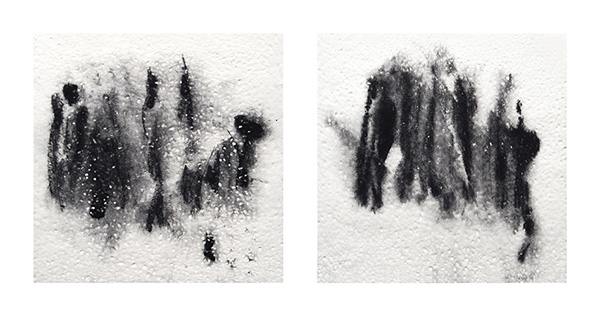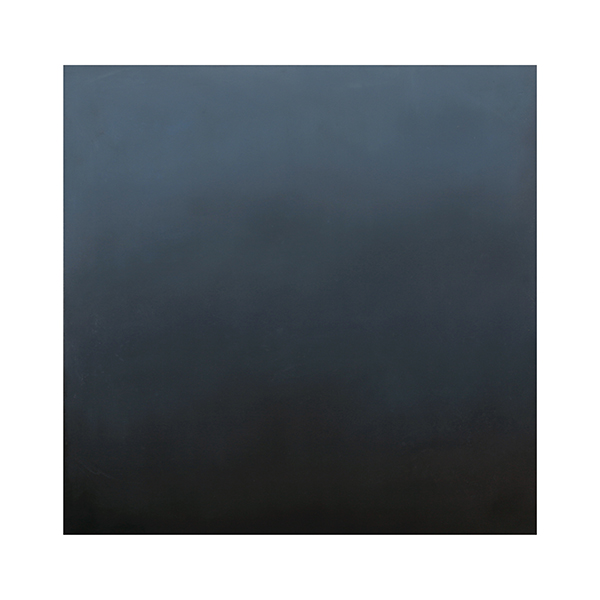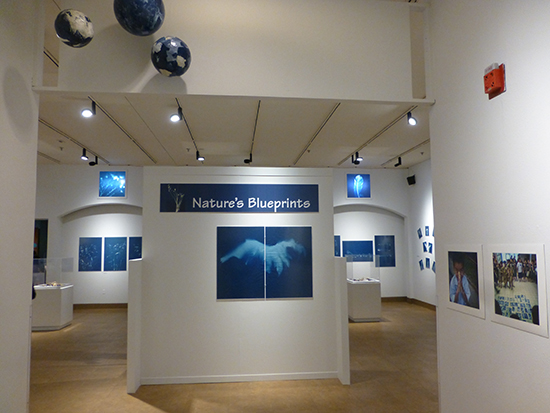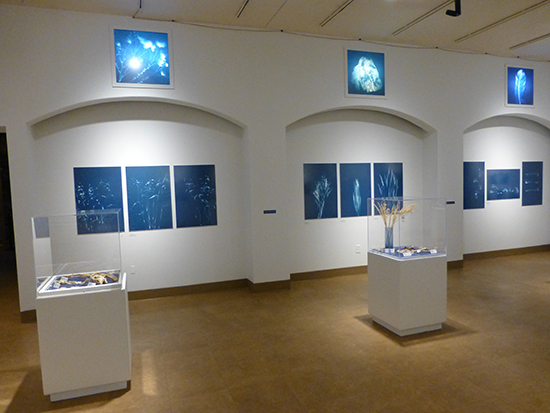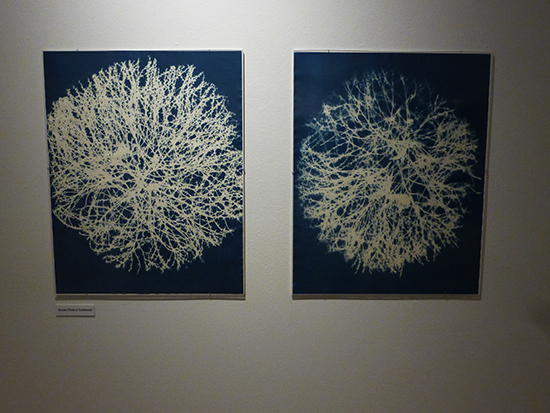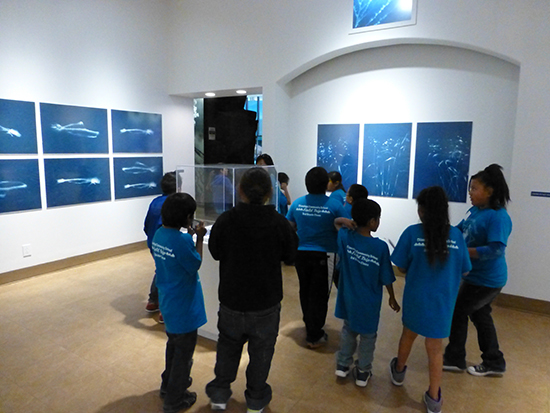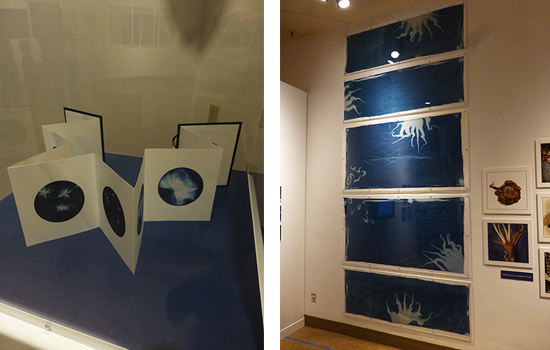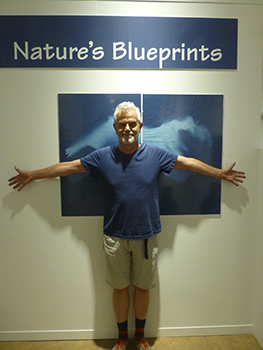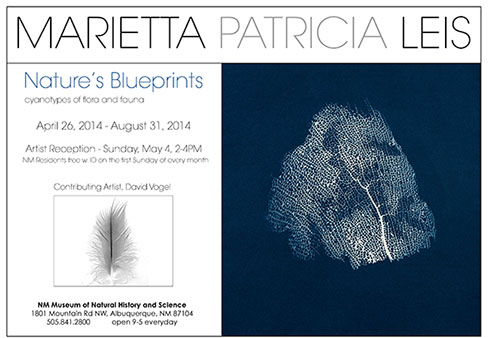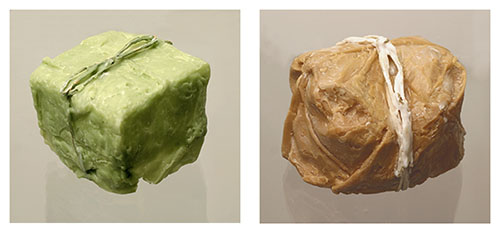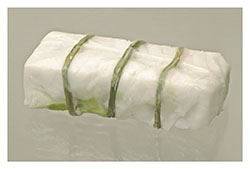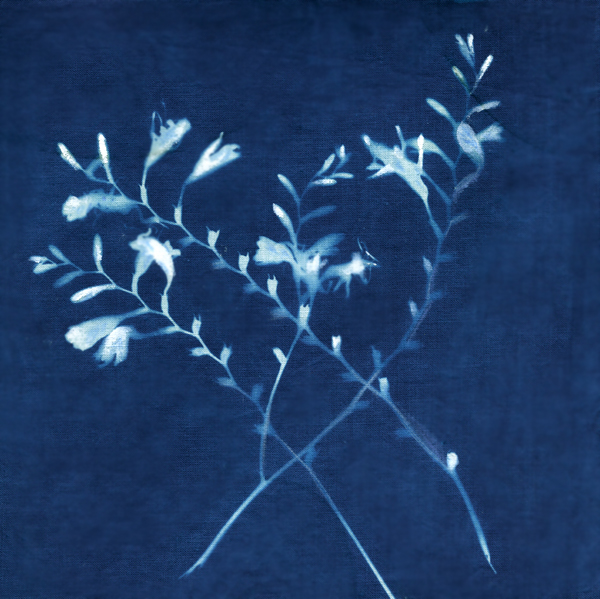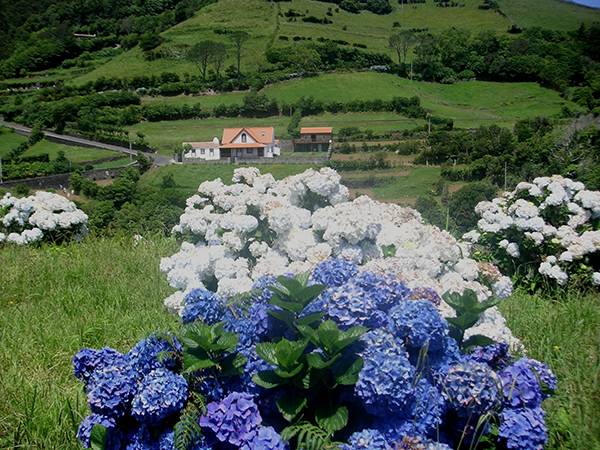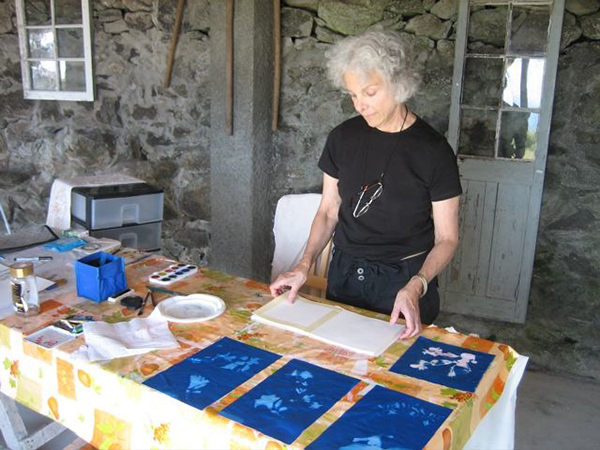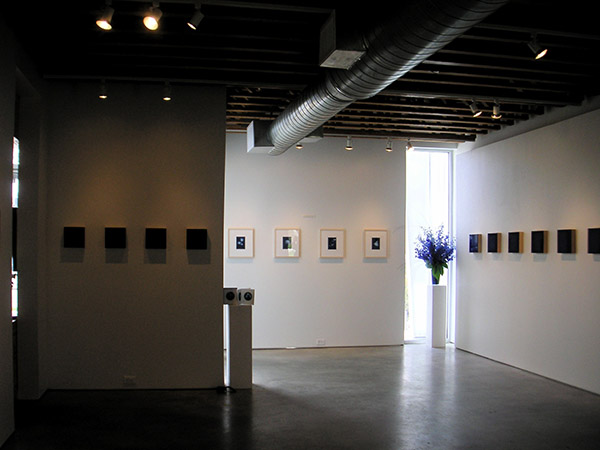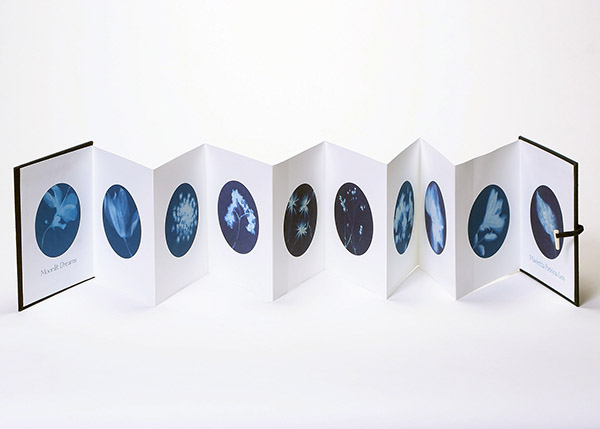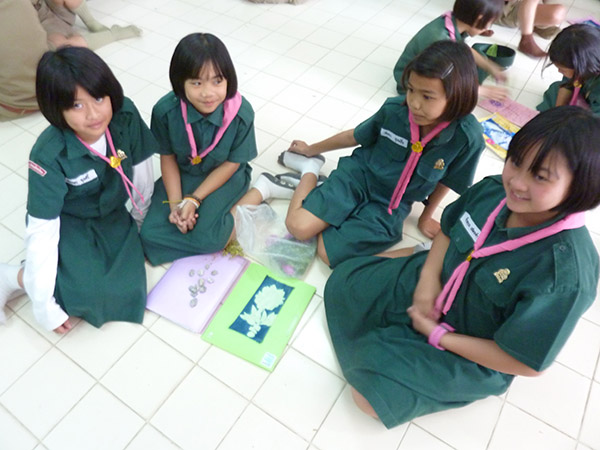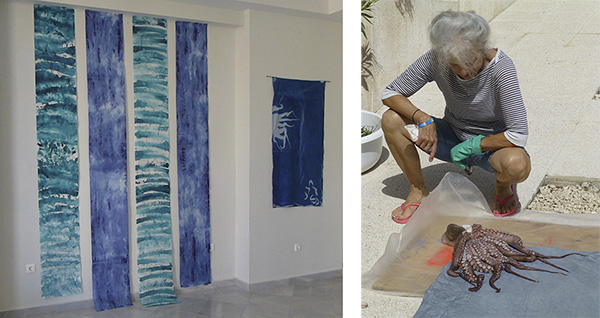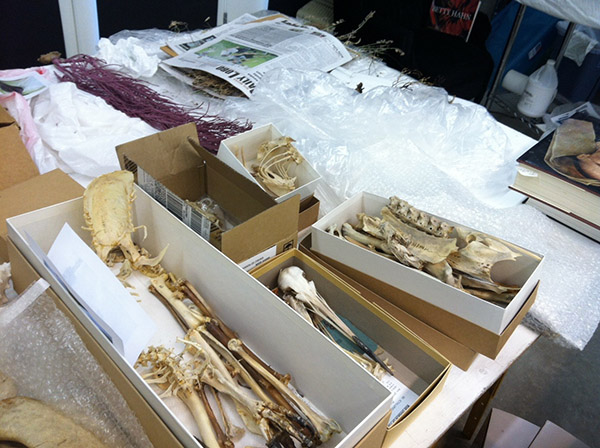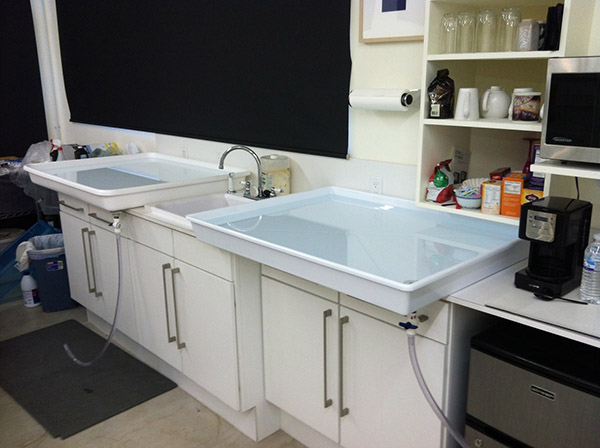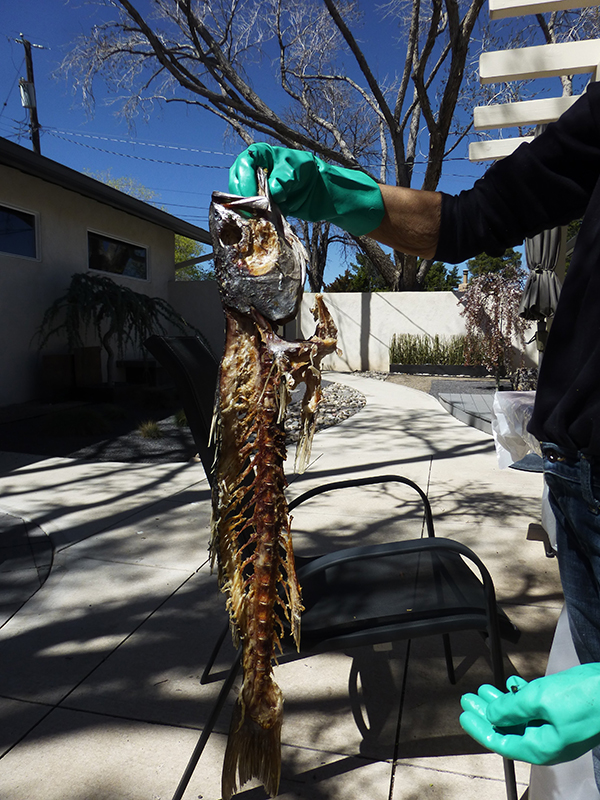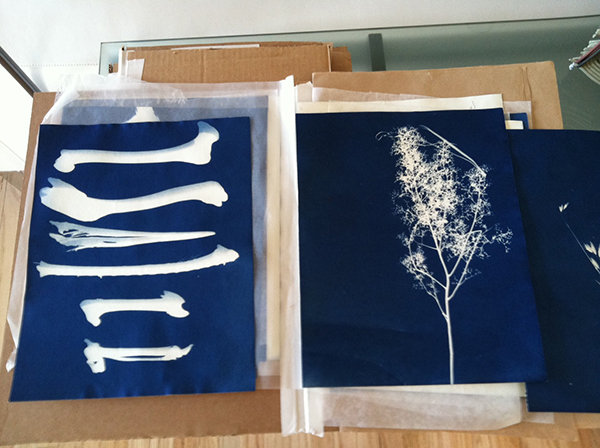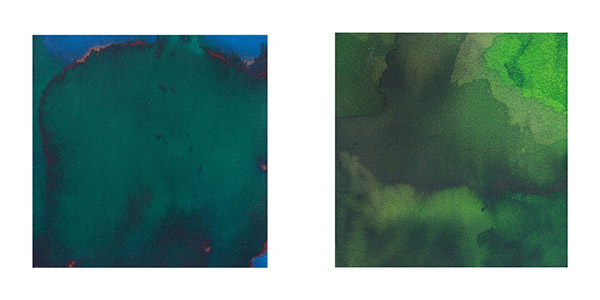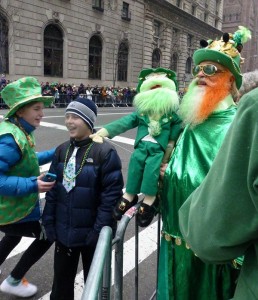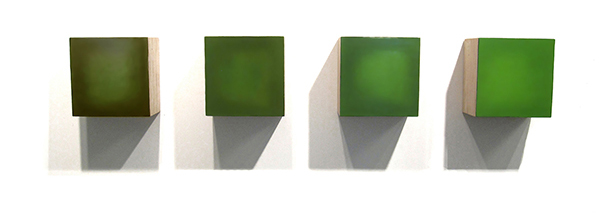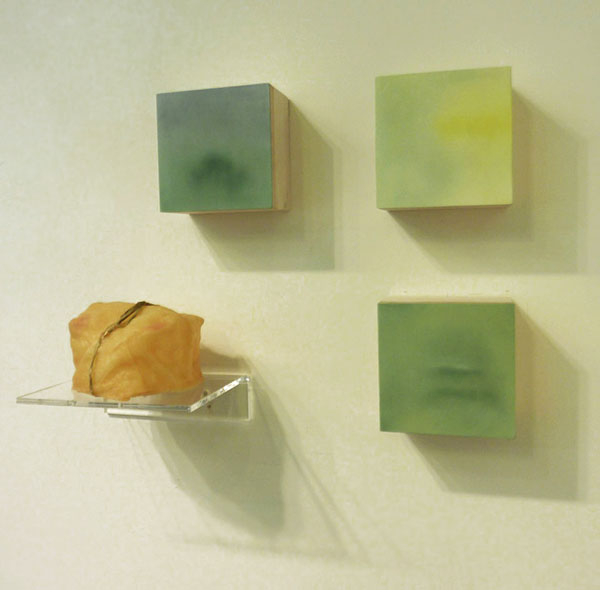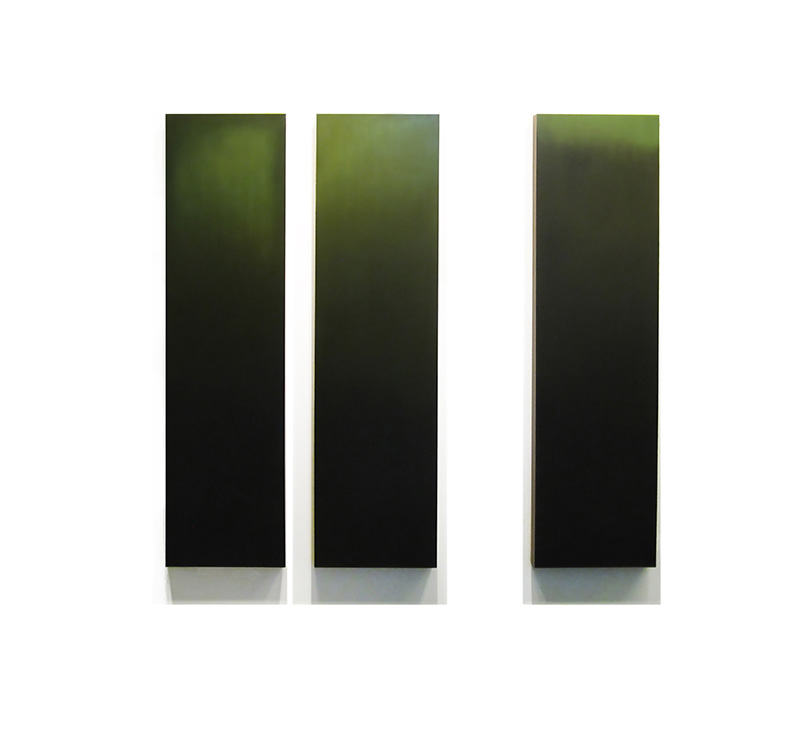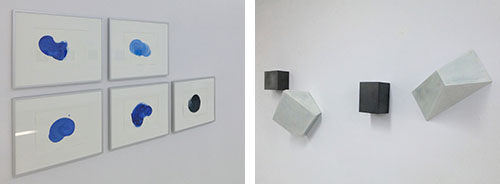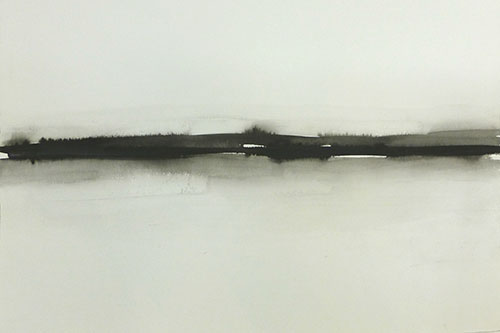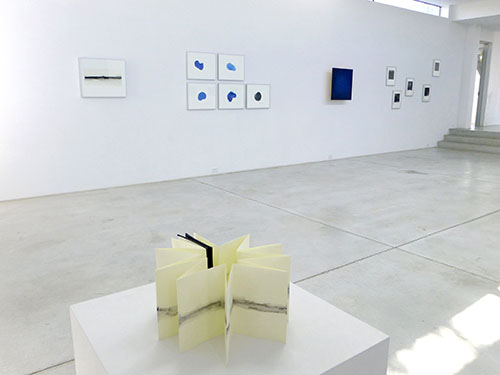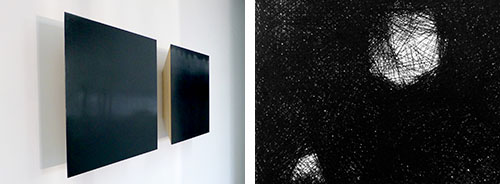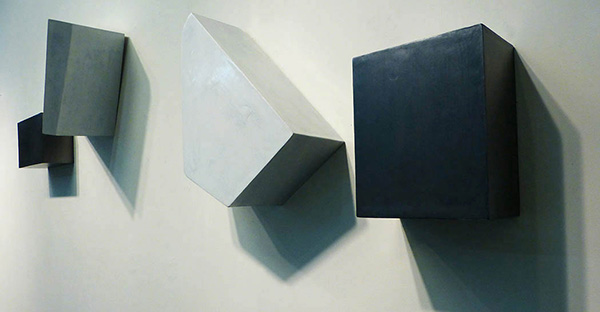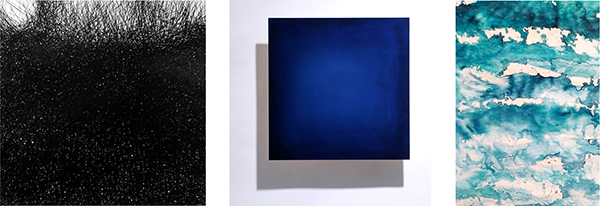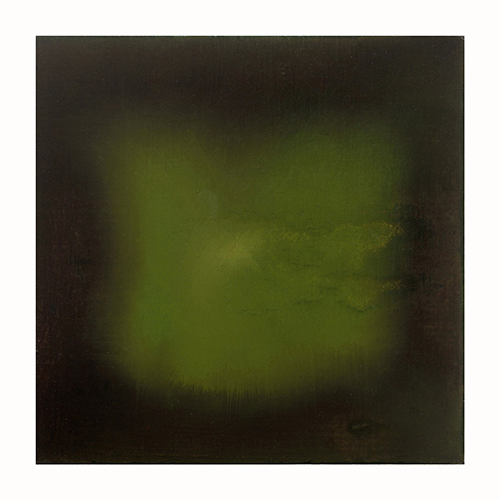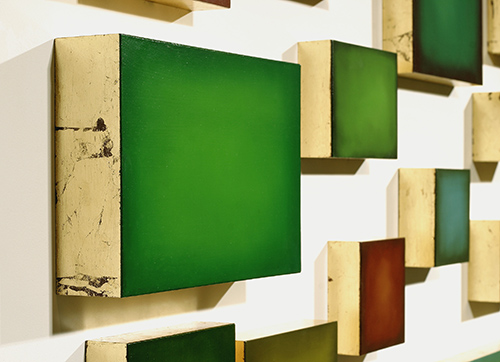As many of you know the Artist Residencies I do reflect where I think I need to be for my work or life, or both. The Ionian Greek island of Kefalonia called to me this year as I felt after a respite of painting green I needed blue again. Having lived by the Jersey Shore growing up and then living in Los 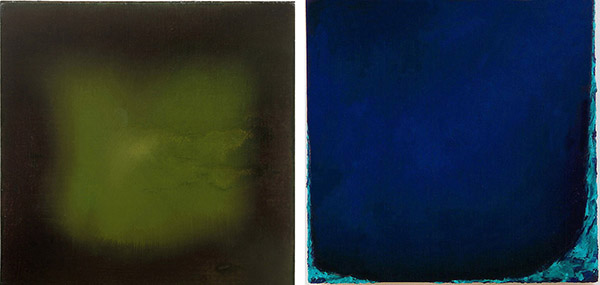 Angeles for 20 years I confess to occasionally feeling water deprived in New Mexico. In Albuquerque our West Mesa has that open horizontal expanse but lacks the accompanying water element. When a field of water dominates my horizon view it makes the world seem without obstacles, endless and open. A place to dream!
Angeles for 20 years I confess to occasionally feeling water deprived in New Mexico. In Albuquerque our West Mesa has that open horizontal expanse but lacks the accompanying water element. When a field of water dominates my horizon view it makes the world seem without obstacles, endless and open. A place to dream!
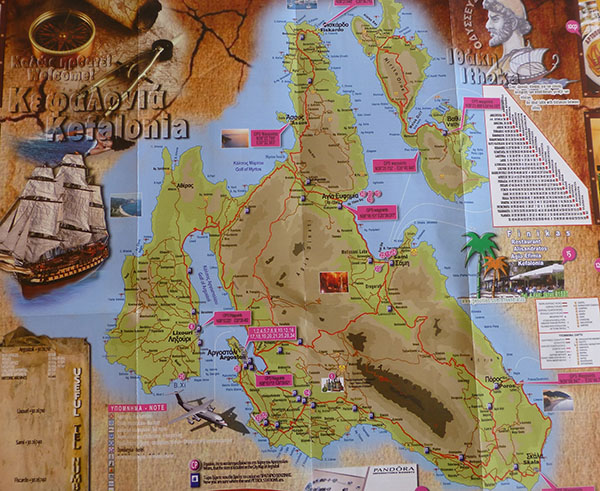
After doing my research the Ionian Center for Arts and Culture on Kefalonia intrigued me. The Center is a hub of advanced education that encourages projects of science and art. It also hosts workshops, exhibitions and Residencies. Moreover Kefalonia is known as the “Green Island” but is also surrounded by the Blue Ionian Sea. In that setting I would have the distinct luxury of both blue and green inspiration. Furthermore the writer Homer and the poet Byron both found muses there so I would be in excellent company.
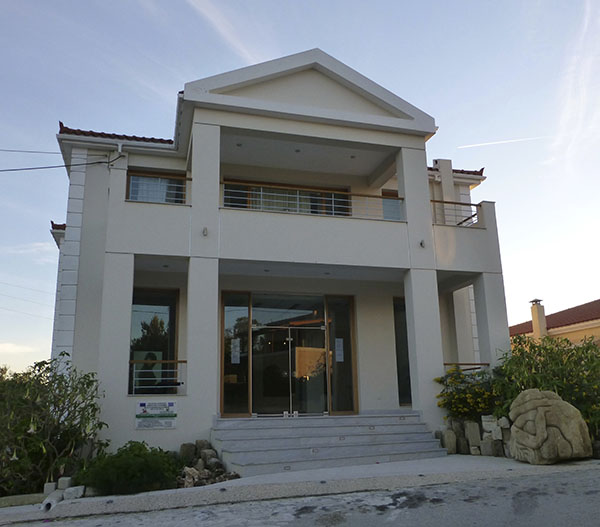 Luckily my application was accepted and my photographer-husband, David Vogel also applied and was accepted. We then wrote a joint proposal for our work and exhibit. All this was done a year in advance but that year sped by and we found ourselves in the Kefalonia village Metaxáta soon enough. The Center is a white marble columned building of impressive architecture. Our rooms had a balcony with views of the surrounding red tile house roofs, the olive trees and the sea—bliss. To top this off my studio had plenty of natural light, ample tables and facilities.
Luckily my application was accepted and my photographer-husband, David Vogel also applied and was accepted. We then wrote a joint proposal for our work and exhibit. All this was done a year in advance but that year sped by and we found ourselves in the Kefalonia village Metaxáta soon enough. The Center is a white marble columned building of impressive architecture. Our rooms had a balcony with views of the surrounding red tile house roofs, the olive trees and the sea—bliss. To top this off my studio had plenty of natural light, ample tables and facilities.
The closest town, Argostoli has a port, plaza, resources for supplies and cafés for coffee and people 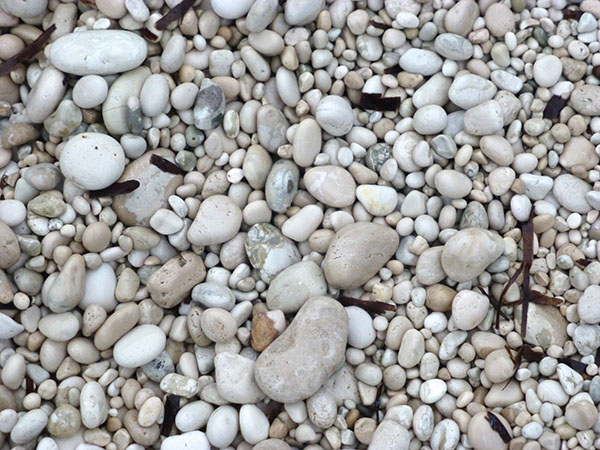 watching—a great place to hang out. The Island is relatively large so at the first opportunity a kind new Greek friend took us on an introductory day trip of the West side of the Island. He brought us to a monastery overlooking an emerald sea housing a monk of an ancient age. Michael also showed us a lovely beach accessed by a hairpin road with white
watching—a great place to hang out. The Island is relatively large so at the first opportunity a kind new Greek friend took us on an introductory day trip of the West side of the Island. He brought us to a monastery overlooking an emerald sea housing a monk of an ancient age. Michael also showed us a lovely beach accessed by a hairpin road with white 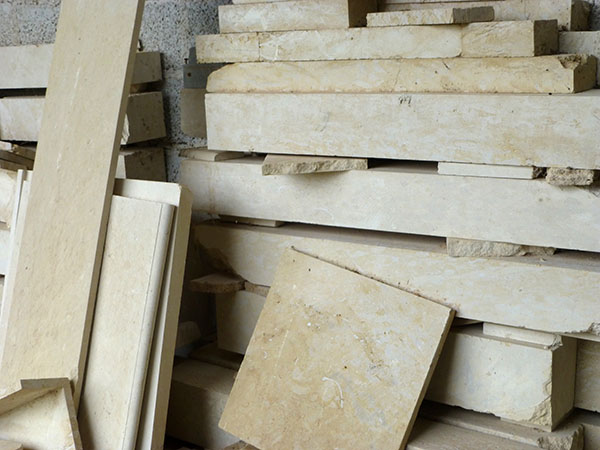 sensually worn smooth rocks. As a rock lover I had to select a couple to add to my collection at home. I believe that rocks hold the energy of ‘place’.
sensually worn smooth rocks. As a rock lover I had to select a couple to add to my collection at home. I believe that rocks hold the energy of ‘place’.
Next we visited a rock quarry—the island does after—all, sit on rock. I’m sure a form of this will show up in my art one day…piles of slabs and fossils. We were then guests at the quarry owner’s home where his wife prepared a wonderful and typical Kefalonia meal. Everything we ate was from their garden, their cow or chicken. Such a treat and typical we found of Greek hospitality and generosity.
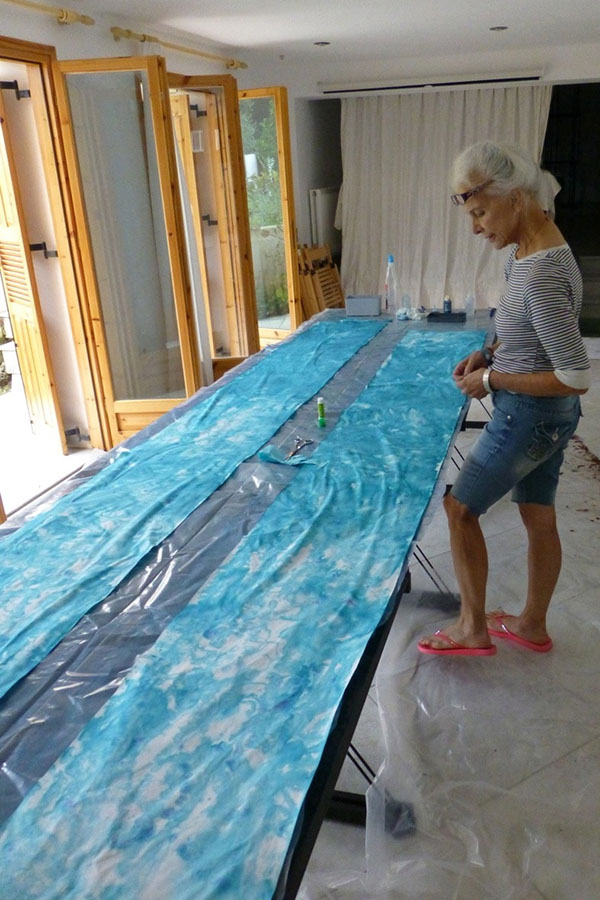 The beautiful turquoise and blue waters and the storm laden skies soon sent me indoors to my studio where I worked on a group of sea/sky 9’ long scrolls with Japanese inks and Washi paper. I should mention that the first weeks we were in Kefalonia we had rain—lots and lots of rain. Not just rain but rainstorms accompanied by violent winds and incredible lightning storms that lit the night skies to daylight. The weather was really a Drama Queen demanding attention and getting it from us.
The beautiful turquoise and blue waters and the storm laden skies soon sent me indoors to my studio where I worked on a group of sea/sky 9’ long scrolls with Japanese inks and Washi paper. I should mention that the first weeks we were in Kefalonia we had rain—lots and lots of rain. Not just rain but rainstorms accompanied by violent winds and incredible lightning storms that lit the night skies to daylight. The weather was really a Drama Queen demanding attention and getting it from us.
While working in the studio during the days I was also doing some digital drawings in the apartment on my iPad in the evenings trying several drawing and paintings apps. Also I was making ink drawings In accordion books. One book would evolve to be called Ionian EKG and would reflect my impressions of the dramatic fickled weather and the other would be called Continuum as the island is a steady presence regardless of being plagued with earthquakes (1953) and foreign occupations— the Venetians, English, Italians, Germans—and financial downturns.
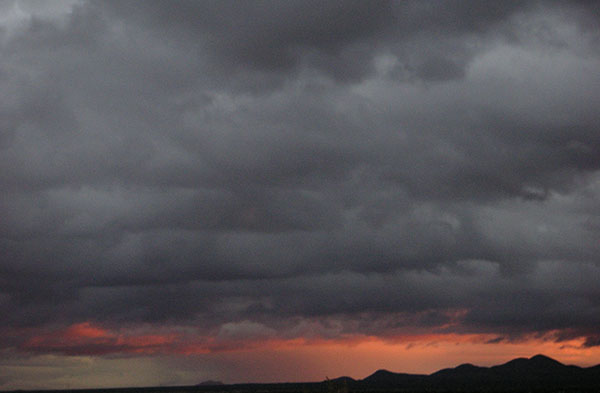
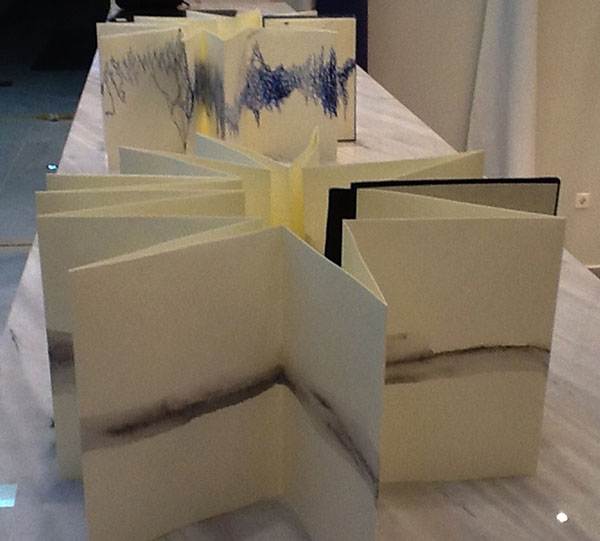
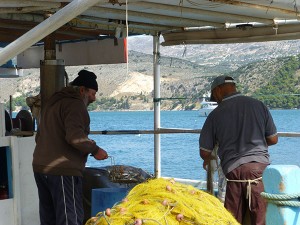 While my work continued David was taking gazillion photographs and editing them totally wrapped up in the stimulus surrounding us. There came a time fairly soon though when I solicited him to help me do a series of cyanotypes—or sun prints. I had it in mind to photograph an octopus with the cyanotype process so he and I went down to Argostoli and bought a ten-pound frozen octopus that in solid form did not intimidate me.
While my work continued David was taking gazillion photographs and editing them totally wrapped up in the stimulus surrounding us. There came a time fairly soon though when I solicited him to help me do a series of cyanotypes—or sun prints. I had it in mind to photograph an octopus with the cyanotype process so he and I went down to Argostoli and bought a ten-pound frozen octopus that in solid form did not intimidate me. 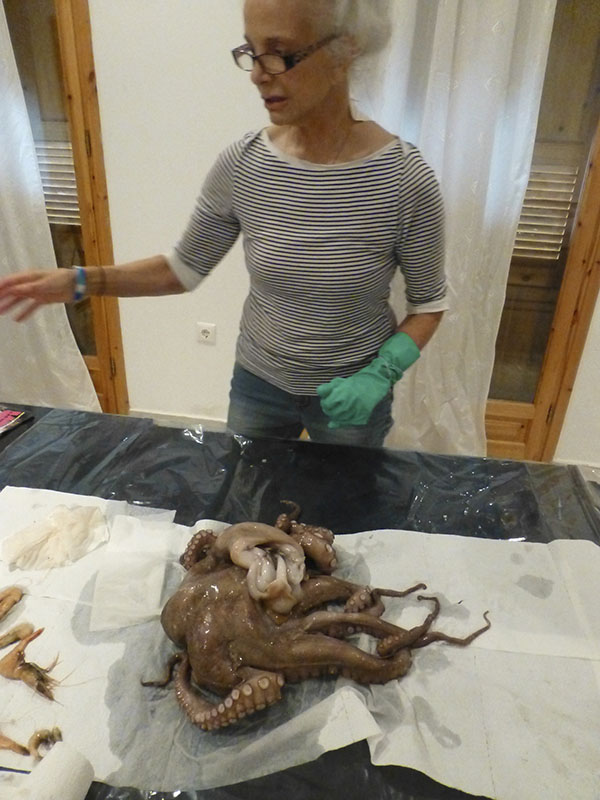 Excited we also bought a squid and some shrimp as well. We put them in the refrigerator at the Center for the octopus to thaw. I had the octopus in mind from the beginning of our residency acceptance. That form came to my mind in a dream and I saw white tentacle shapes dancing in fields of blue.
Excited we also bought a squid and some shrimp as well. We put them in the refrigerator at the Center for the octopus to thaw. I had the octopus in mind from the beginning of our residency acceptance. That form came to my mind in a dream and I saw white tentacle shapes dancing in fields of blue.
In a day and a half Octo (as he became affectionately known) thawed and my affection for him dimmed somewhat as I handled the slimy mass that had eyes and suckers. I kept telling myself how privileged I was to hold such a primordial sentient being in my hands—but my reptilian brain kept urging me to drop the critter and flee. There was no chance of that happening however because I had to put up a brave front for the husband that I had enlisted to help me with this project.
OK—here’s the cyanotype process—we began with the smaller creatures—squid and shrimp and the chemically treated paper. In a semi dark room (made so with newspapers covering the windows and glass door) we placed the objects (yes I’m objectifying the critters) in a composition on the paper placed on a board. We lifted the board and carefully carry our sandwiched package outside and lay it down on the sunny driveway. Note that this required many squats and resultant sore muscles. I watched the paper intensely and when I determine it has turned a gray-blue we hurriedly lifted our passenger up and swiftly carry it inside the darkened space to rinse in water quickly revealing the white image and blue background—then off to drying. Now to rearrange the composition and do the 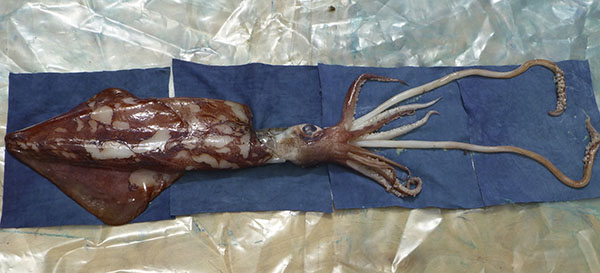 ritual again and again and again. With squid and shrimp and shrimp and squid. Finally we feel the ‘opening act’ served it’s purpose and we’re ready for big time except we’re too tired and need to rest and do Octo the next day.
ritual again and again and again. With squid and shrimp and shrimp and squid. Finally we feel the ‘opening act’ served it’s purpose and we’re ready for big time except we’re too tired and need to rest and do Octo the next day.
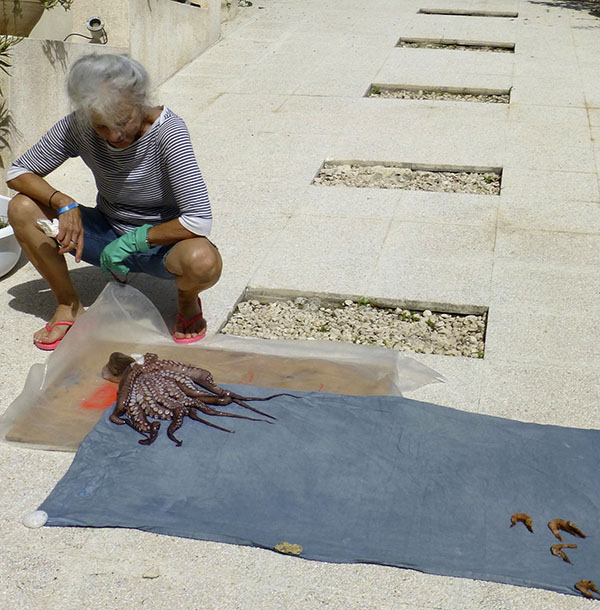 The next day came and squishy Octo became our leading man. After some shots we were handling Octo like pros placing his tentacle’s this way and that and getting good images. Cyanotypes are magical. It’s an ‘alive’ process because you witness the developing happening before your eyes and the results are not predictable which is sometimes a disaster but always a thrill. Oh, and confession to be made—we prepared and ate the octopus and squid after they were our loyal models. Sad but true and delicious!
The next day came and squishy Octo became our leading man. After some shots we were handling Octo like pros placing his tentacle’s this way and that and getting good images. Cyanotypes are magical. It’s an ‘alive’ process because you witness the developing happening before your eyes and the results are not predictable which is sometimes a disaster but always a thrill. Oh, and confession to be made—we prepared and ate the octopus and squid after they were our loyal models. Sad but true and delicious!
With my scrolls completed and the cyanotypes drying David and I turned our focus to preparing our exhibit and talk event which was happening in a week’s time. We decided to call the event, “The Artist’s Mind” and talk about our life, travels, work and our impressions of Kefalonia. We outlined our talk and compiled illustrative slides. David made a slide show of his wonderful photography of Kefalonia and also one of his work in the Antarctic as the Center’s curator, Sophie Kagadis, felt strongly that people on the Island would want to see and hear about our trip there last January. He also made one of our making the cyanotypes as he thought people would be interested and amused in that process and lastly a slide show of the images I created on my iPad. I truly enjoyed being able to quickly sketch with the software and find out all the variables possible.
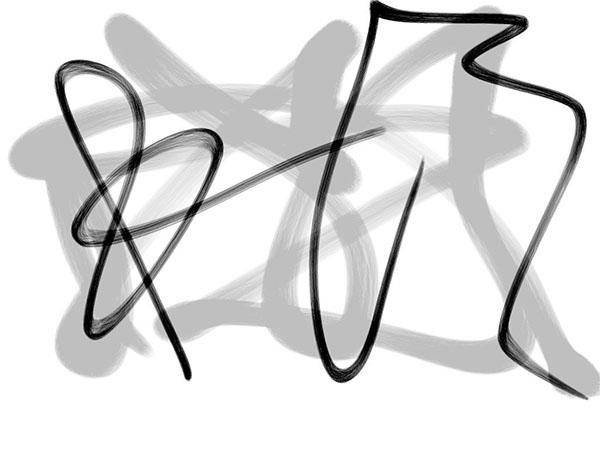
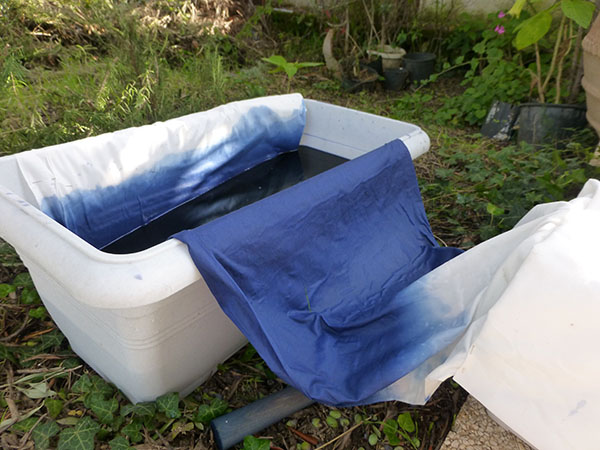 While we were installing the work with some trusty helpers I found time to do another project. I wanted to try to dye some large sheets of fabric with BLUE “sea and sky”. I did this outside with tubs and drying racks. Although a novice I liked the results enough to use these panels in the exhibit. At another time in my future I would like to use indigo and try this again. I once did a brief indigo dyeing stint with a master in Japan and was impressed by the process, beauty and history. It has stuck with me ever since and will probably come to fruition in the future.
While we were installing the work with some trusty helpers I found time to do another project. I wanted to try to dye some large sheets of fabric with BLUE “sea and sky”. I did this outside with tubs and drying racks. Although a novice I liked the results enough to use these panels in the exhibit. At another time in my future I would like to use indigo and try this again. I once did a brief indigo dyeing stint with a master in Japan and was impressed by the process, beauty and history. It has stuck with me ever since and will probably come to fruition in the future.
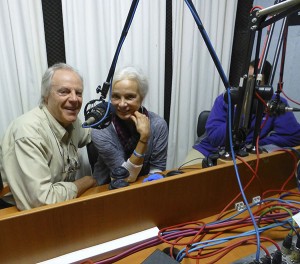 So our “The Artist’s Mind” became a multimedia event of photography, paintings, cyanotypes, dyed painting and slide discussion. We had an adventure setting up all the media—projectors in two areas and a TV screen in another. Luckily we had experienced help converting our US Apple projects to Greek PC—more complex than it should be methinks.
So our “The Artist’s Mind” became a multimedia event of photography, paintings, cyanotypes, dyed painting and slide discussion. We had an adventure setting up all the media—projectors in two areas and a TV screen in another. Luckily we had experienced help converting our US Apple projects to Greek PC—more complex than it should be methinks.
We had a fabulous time doing a radio interview with two wonderful ladies at the local station. We found ourselves 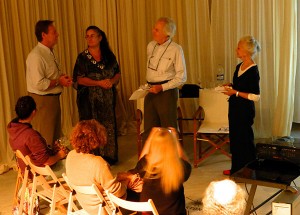 laughing and carrying on a bit and extending our interview to all areas of life and art and telling people to come to the event.
laughing and carrying on a bit and extending our interview to all areas of life and art and telling people to come to the event.
“The Artist’s Mind” was a wonderful night and came off beautifully. The attendees were so enthusiastic, interested and welcoming. We had a translator but didn’t need her as everyone that attended had a command of English. The Vice Mayor of the Island attended and opened our talk by saying that we were now Kefalonians.
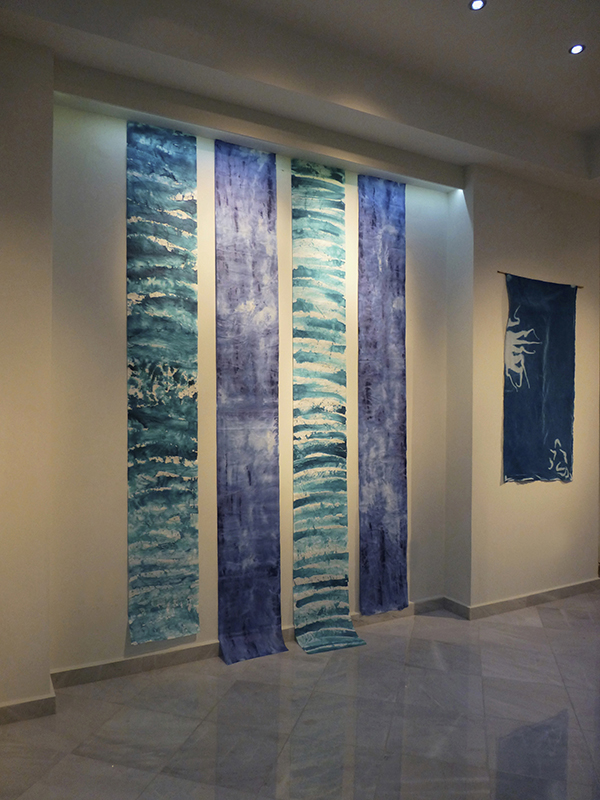
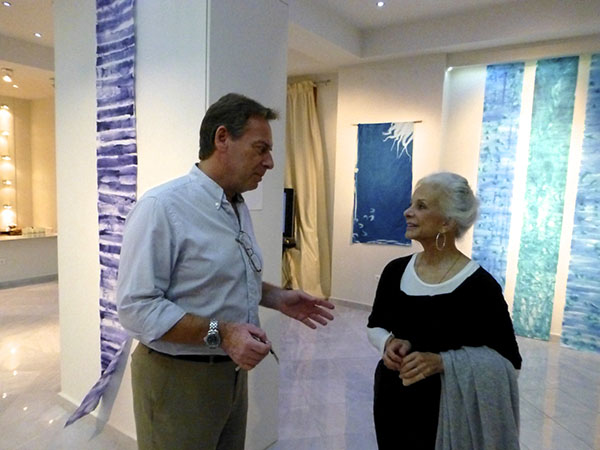
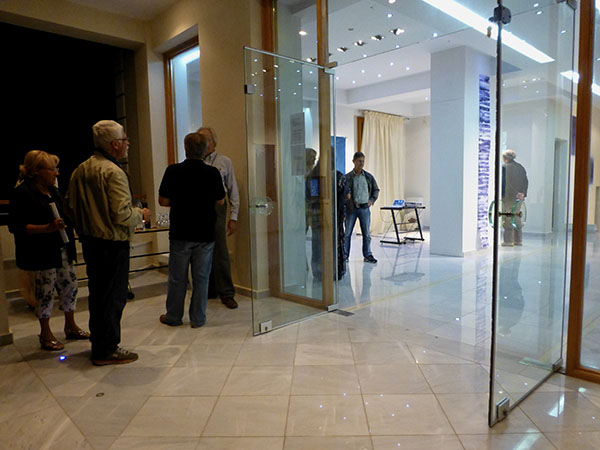
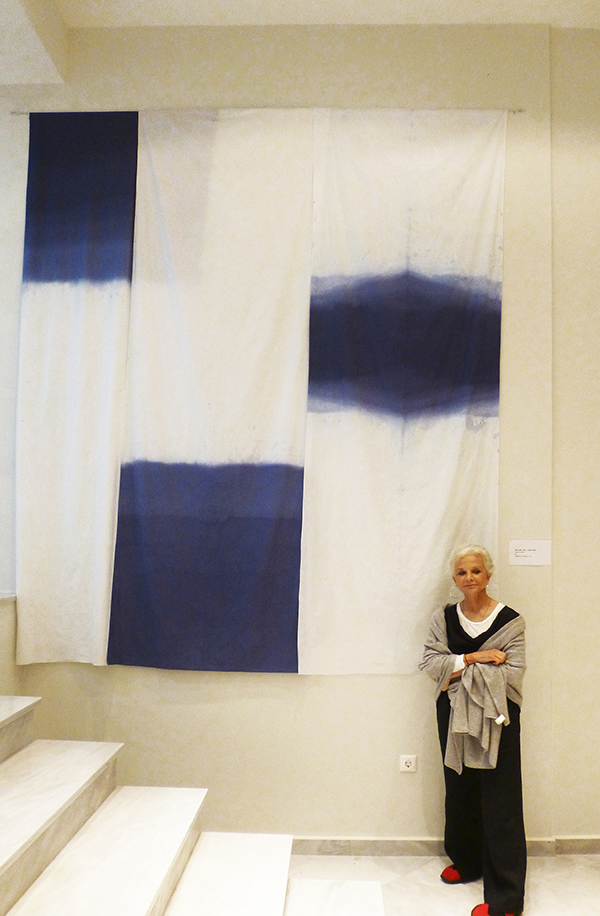
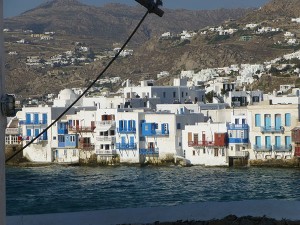 Before we left we had a couple of days to wonder and visited the North and East of the island and ate some wonderful food, sat on beaches and celebrated David’s birthday. Then we headed to Mykonos just to see the “white town”, windmills and sea. A picture postcard Island. Then on to Athens.
Before we left we had a couple of days to wonder and visited the North and East of the island and ate some wonderful food, sat on beaches and celebrated David’s birthday. Then we headed to Mykonos just to see the “white town”, windmills and sea. A picture postcard Island. Then on to Athens.
Athens is such a gift, steeped in a long history and civilization and yes, democracy. The energy of the city is still very much present and it was apparent at every turn. Our arrival date coincided with their Independence holiday. It was very festive in the streets and perhaps forgotten for a while were the economic difficulties the Greeks are experiencing that otherwise is very much a point of discussion.
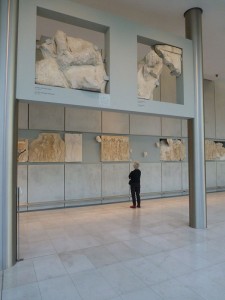 We loved having the Acropolis view from our Plaka hotel balcony. The Acropolis Museum was a breathtaking architecturally and complimented and honored the Acropolis that could be seen from its windows and restaurant terrace. We were so fortunate to be able to view and be next to the Acropolis at every turn. The visit to the Acropolis was astounding but it was the brushing up against it in unexpected ways that made it, for our brief visit, memorable. At the Museum you actually entered walking on top of archeological ruins peering down upon them through glass walkways leading into the Museum. The displays were monumental.
We loved having the Acropolis view from our Plaka hotel balcony. The Acropolis Museum was a breathtaking architecturally and complimented and honored the Acropolis that could be seen from its windows and restaurant terrace. We were so fortunate to be able to view and be next to the Acropolis at every turn. The visit to the Acropolis was astounding but it was the brushing up against it in unexpected ways that made it, for our brief visit, memorable. At the Museum you actually entered walking on top of archeological ruins peering down upon them through glass walkways leading into the Museum. The displays were monumental.
Walking in Athens was easy and there was something 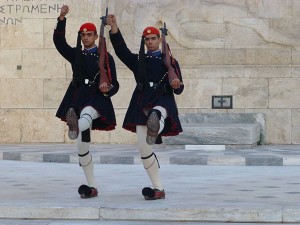 to see at every turn like when we came upon the changing of the guards at the tomb of the unknown soldier—tradition and choreography at play. The other thing we found compelling was the jewel-box Museum of Cycladic Art. The objects were so minimal, classical and beautiful and made in 2000 or so BC—very inspiring and humbling to this artist.
to see at every turn like when we came upon the changing of the guards at the tomb of the unknown soldier—tradition and choreography at play. The other thing we found compelling was the jewel-box Museum of Cycladic Art. The objects were so minimal, classical and beautiful and made in 2000 or so BC—very inspiring and humbling to this artist.
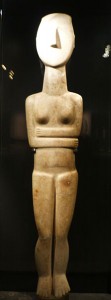
Residencies bring me to many places I would not otherwise visit. They provide me with a bit of immersion into a country and it’s people giving me insights and appreciation I would not otherwise have. Not being engaged in my everyday tasks of life gives me an opportunity to focus and dream about my art. All these and more are gifts that I bring home with me to my studio and then the gifts keep on giving. As sorry as I was to leave Greece I’m excited to be back in my world again with new ideas. I feel blessed to have these opportunities. So where shall I apply next?
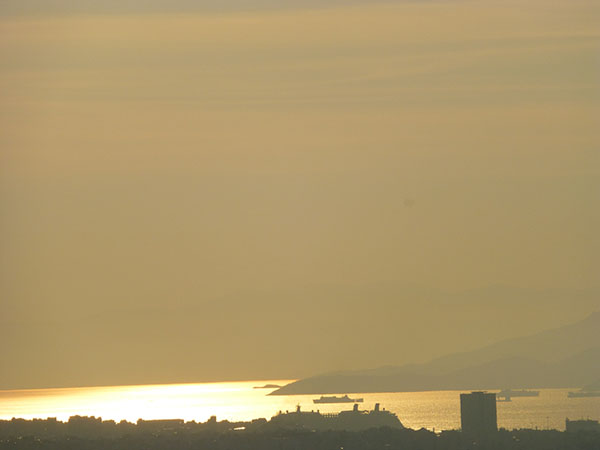
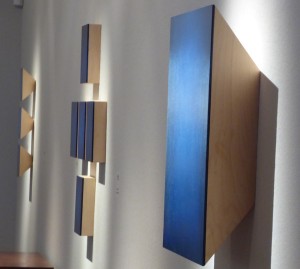 Last year John Aasp, the curator at the Rockport Center for the Arts in the Texas Gulf, contacted me about an exhibit idea he had. The Center hosts a Home Tour every spring and he wanted to integrate my art with the woodwork of George Bagnall and Michael Geer. As most of my paintings use fabricated birch frames John thought the art and woodwork would both stand-alone and yet show cohesively. John‘s vision and enthusiasm for the project excited me and I agreed to put the exhibit’s time slot on my calendar for 2015.
Last year John Aasp, the curator at the Rockport Center for the Arts in the Texas Gulf, contacted me about an exhibit idea he had. The Center hosts a Home Tour every spring and he wanted to integrate my art with the woodwork of George Bagnall and Michael Geer. As most of my paintings use fabricated birch frames John thought the art and woodwork would both stand-alone and yet show cohesively. John‘s vision and enthusiasm for the project excited me and I agreed to put the exhibit’s time slot on my calendar for 2015.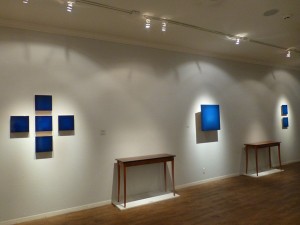 As you well know time passes quickly, especially quickly it seems for timelines of crating and shipping work. I made plane and hotel reservations to be in Rockport for the exhibit’s April 11th opening reception and gallery talk and also the Home Tour. I arrived at the gallery the day before the opening and was so thrilled to see John’s vision unfold before me so exquisitely.
As you well know time passes quickly, especially quickly it seems for timelines of crating and shipping work. I made plane and hotel reservations to be in Rockport for the exhibit’s April 11th opening reception and gallery talk and also the Home Tour. I arrived at the gallery the day before the opening and was so thrilled to see John’s vision unfold before me so exquisitely.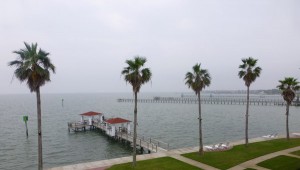 Our hotel room faced the Gulf bay with its broad vista. The weather was refreshing for dry-landers like me as clouds, rain and storms prevailed. It created a perfect backdrop for some of my paintings that are inspired by the sometimes chaotic weather systems of sea and sky.
Our hotel room faced the Gulf bay with its broad vista. The weather was refreshing for dry-landers like me as clouds, rain and storms prevailed. It created a perfect backdrop for some of my paintings that are inspired by the sometimes chaotic weather systems of sea and sky.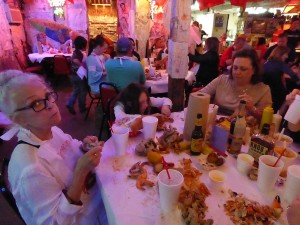 Rockport starting with yummy Italian cuisine and proceeded to exceptional seafood. The most entertaining meal was a fish boil that literally dumped our orders on our table with a mallet as our only eating tool.
Rockport starting with yummy Italian cuisine and proceeded to exceptional seafood. The most entertaining meal was a fish boil that literally dumped our orders on our table with a mallet as our only eating tool.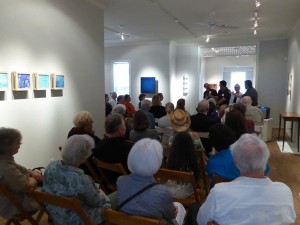 Michael, George, our moderator John Aasp, and myself. It’s always a pleasure for me to talk about the intentions of my work. Reductive work like mine requires some backstory and deep looking for understanding.
Michael, George, our moderator John Aasp, and myself. It’s always a pleasure for me to talk about the intentions of my work. Reductive work like mine requires some backstory and deep looking for understanding.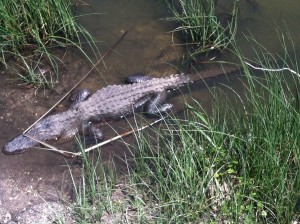 had opportunities to speak one-on-one to the people in the audience.
had opportunities to speak one-on-one to the people in the audience.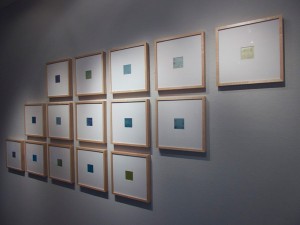 Art centers can be an exquisite way to provide art experiences in a community with exhibitions, classes, and in the case of Rockport Center for the Arts, a film festival, a home tour and an energetic, talented staff and volunteers providing exceptional experiences for audience and artists alike. I am grateful to have worked with this marvelous organization and look forward to working with Delaplaine Visual Arts Education Center, MD in November.
Art centers can be an exquisite way to provide art experiences in a community with exhibitions, classes, and in the case of Rockport Center for the Arts, a film festival, a home tour and an energetic, talented staff and volunteers providing exceptional experiences for audience and artists alike. I am grateful to have worked with this marvelous organization and look forward to working with Delaplaine Visual Arts Education Center, MD in November.
